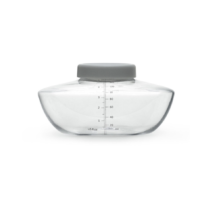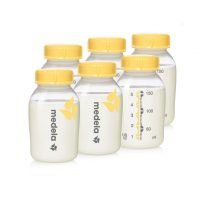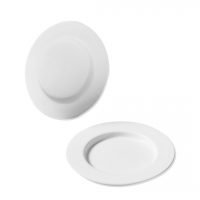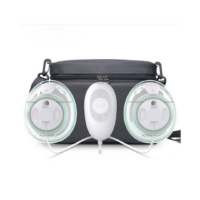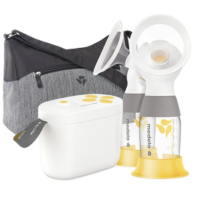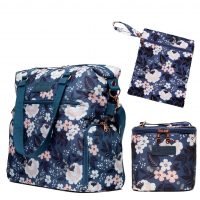Improperly stored breast milk poses a risk to your baby’s health. In the best case scenario, inadequate storage may affect the quality and taste of milk through enzyme breakdown or freezer burn, which can contribute to feeding problems for some infants. It may also result in nutrient loss, compromising the valuable vitamins, minerals, and antibodies present in breast milk. Among the worse scenarios, harmful microorganisms and bacteria may thrive in improperly stored breast milk, increasing the risk of infections and gastrointestinal issues when your baby consumes the contaminated milk. By following proper storage guidelines and maintaining hygiene throughout the process, you can minimize these risks and ensure that your baby receives safe and nourishing breast milk.
Understanding the basics of breast milk storage
Breast milk is a valuable source of nutrition for your baby, and correct storage ensures your little one gets all the benefits. When it comes to storing breast milk, choosing the right containers is essential. Look for BPA-free bottles or storage bags designed specifically for breast milk. Don’t forget to label and date each container to ensure proper rotation and usage. It’s always best to use the oldest milk first, following the “first in, first out” principle.
Safe Storage Guidelines
Refrigeration
The CDC and other health experts recommend refrigerating breast milk promptly (within four hours) at a temperature of 40°F. Make sure to place the containers at the back of the refrigerator, where it’s cooler, to maintain milk quality. You can store freshly expressed breast milk in the refrigerator for up to 4 days, but if you want to preserve its full nutritional value, use it within 48─72 hours.
Freezing
Freezing breast milk can extend its shelf life significantly. To freeze breast milk, ensure that the containers are airtight and leave some room for expansion as the milk freezes. We recommend using containers specifically designed for breast milk. Breast milk bags are a nice option because they take up less space, and they’re easy to thaw. Label each container with the date so you can rotate the milk to prevent losing nutritional value. You can safely store breast milk in a standard freezer compartment for up to 6 months, while a deep freezer can preserve it for up to 12 months.
Thawing Techniques
If you want to preserve its nutritional properties, you’ve got to be gentle when handling frozen breast milk. The safest method is to thaw it slowly in the refrigerator overnight or by placing the container in a bowl of warm water. Avoid using a microwave or boiling water, as they can create hot spots and destroy vital nutrients. Once thawed, gently swirl the container to mix any separated layers of milk before feeding it to your baby.
Tips for Military Moms
Traveling with Breast Milk
As a military mom, traveling with breast milk may be a necessity. It’s important to familiarize yourself with air travel regulations to ensure a hassle-free experience. The Transportation Security Administration (TSA) allows you to carry breast milk in quantities exceeding the usual 3.4-ounce limit for liquids. Inform the security personnel and have your breast milk containers easily accessible for inspection. Consider using insulated cooler bags with ice packs to maintain the temperature during your journey.
Deployments and Long Absences
Long separations can be challenging, but with the right strategies, you can continue providing breast milk for your little one. If possible, establish a frozen breast milk supply before leaving. Use storage bags designed for breast milk and stack them flat to optimize space in the freezer. Consider shipping frozen breast milk to your home or using milk banks as alternative options to ensure your baby receives the nourishment they need while you’re deployed.
Best Practices for Maintaining Milk Quality
Hand Hygiene
Maintaining proper hand hygiene is crucial throughout the milk expression and storage process. Wash your hands thoroughly with soap and water before handling breast milk or breast pump equipment to prevent contamination.
Breast Pump Cleaning
Cleaning your breast pump after each use is essential to ensure milk quality. Follow the manufacturer’s instructions for cleaning and sterilizing the various parts of your breast pump. Proper cleaning prevents bacteria growth and maintains optimal pump performance.
Proper Milk Handling
When pouring breast milk into storage containers, avoid touching the inside of the containers or the lids. If you accidentally spill or contaminate the milk, discard it to maintain its quality. Additionally, avoid reusing breast milk that has already been fed to your baby to prevent bacterial growth.
Avoiding Storage Mistakes
To maintain the freshness and quality of breast milk, avoid common storage mistakes. Never add freshly expressed milk to already frozen milk, as it can lower the overall storage time. Likewise, avoid refreezing thawed milk, as it can impact the nutritional value and increase the risk of bacterial growth.
Troubleshooting Common Storage Issues
Milk Separation
It’s common for breast milk to separate into layers when stored. This separation occurs due to differences in the milk’s fat content. To address this, gently swirl the container to blend the layers before feeding it to your baby. Do not shake the milk vigorously, as it can damage the delicate nutrients.
Lipase Enzyme
Some breast milk may develop a soapy or rancid odor and taste due to the presence of lipase enzyme. While harmless, it can be off-putting to babies. If you notice this change, scalding the milk before freezing can help inactivate the lipase enzyme and prevent the odor and taste change.
Temperature Fluctuations
If you experience unexpected temperature fluctuations during power outages or traveling, it’s essential to assess the condition of the breast milk. If the milk has partially thawed but still contains ice crystals, you can refreeze it safely. However, if the milk has completely thawed and remained at room temperature for more than two hours, it’s best to discard it to prevent bacterial growth.
By following these guidelines and incorporating best practices, you can feel more confident that your little one is receiving all the nourishing benefits of breast milk, even when you’re not physically present. Remember, you’re doing an amazing job, and we’re honored to be a part of your breastfeeding journey. Happy pumping and storing!

